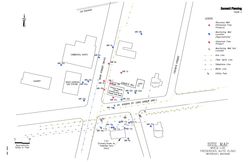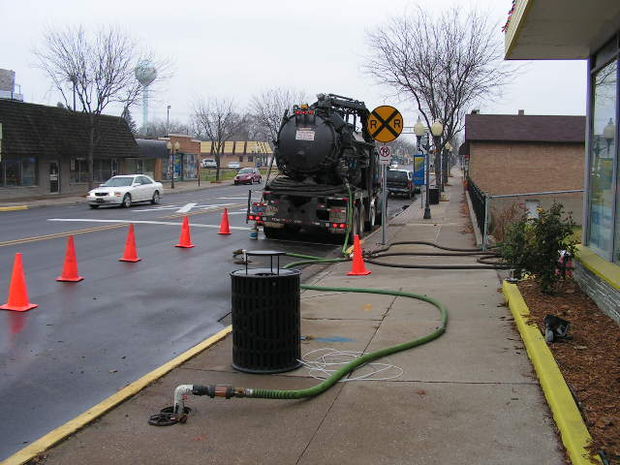Search: Site This Page
(405) 360-1552

| Ecovac Services / Projects / Gasoline / SURFAC Projects / |
Watervliet, Michigan
|
SITE LOCATION: |
Watervliet, Michigan |
|
CONTAMINATION: |
Separate-phase hydrocarbons (SPH) in five wells ranging in thickness from 0.02 to 1.05 feet |
|
GEOLOGY: |
The subsurface contains glacial till that consists of silty sand. |
|
HYDROGEOLOGY: |
Groundwater is present in an unconfined aquifer at approximately 25 feet below grade. |
|
SURFAC® EFFECTIVENESS: |
SPH is not present and the site is undergoing closure monitoring |
Background
Approximately 92,000 gallons of gasoline were released over 60 years ago in 1948. A site investigation conducted in 2000 revealed the presence of SPH at the site. Remedial activities included hand bailing from November 2000 to September 2002. A recovery system, utilizing a down-hole bladder pump, was then installed and operated until November 2005. This system recovered approximately 316 gallons of SPH and 886 gallons of groundwater containing dissolved hydrocarbons. 
Geology/Hydrogeology
Groundwater is present in glacial till that consists of silty sand at depths ranging from approximately 20 to 25 feet below grade.
Treatment Methodology
EcoVac Services was contacted to implement SURFAC® at this site due to the challenging conditions (i.e. presence of SPH under a roadway and building structure and ongoing presence of SPH despite previous remedial attempts) and lack of funds the state was able to spend.
EcoVac Services’ patented SURFAC® process is the combination of dual-phase/multi-phase extraction and surfactant injection. EcoVac Services employs its EFR® (enhanced fluid recovery) process for the dual-phase/multi-phase extraction component of EcoVac Services’ patented SURFAC® process. The process described herein is patent-protected and represents the intellectual property of EcoVac Services, Inc.
EFR® and SURFAC® Implementation
Four EFR® events were conducted at the site from March to October 2007 to (1) achieve contaminant removal, (2) reduce the aerial/vertical extent of the plumes, (3) determine the surfactant injection volumes/locations/sequence, and (4) determine the duration of the surfactant injection/capture events.
SPH was present in one monitor well (0.02 feet) prior to the initial EFR® event. The initial EFR increased the SPH thickness as well as mobilized SPH into four additional wells (0.02 to 1.05 feet). Three additional EFR® events decreased SPH thicknesses to 0.02 feet in two wells.
SURFAC® was implemented at the site from November 2006 to January 2007. SPH returned to one well after one year of monitoring. Two additional EFR® events were conducted in April and June 2008 to remove the remaining SPH.
Results and Conclusions
Currently, SPH is not present and the site is undergoing closure monitoring.
